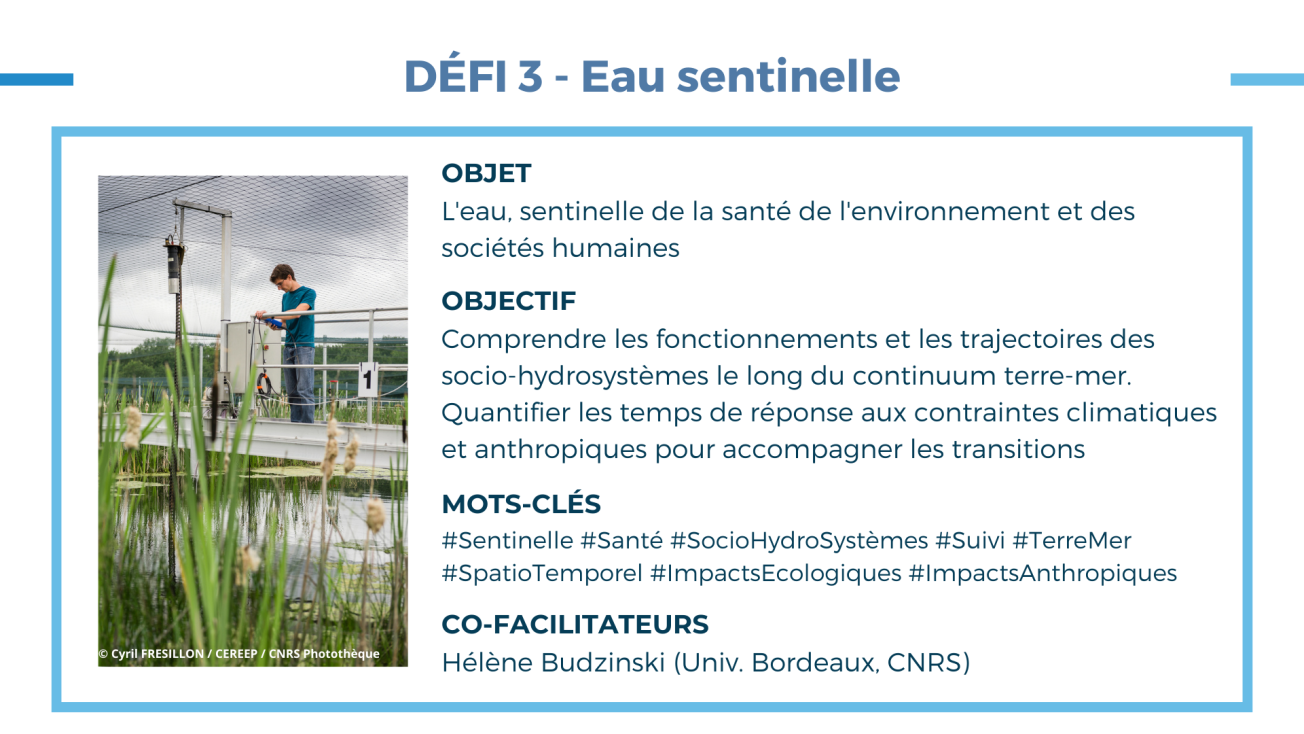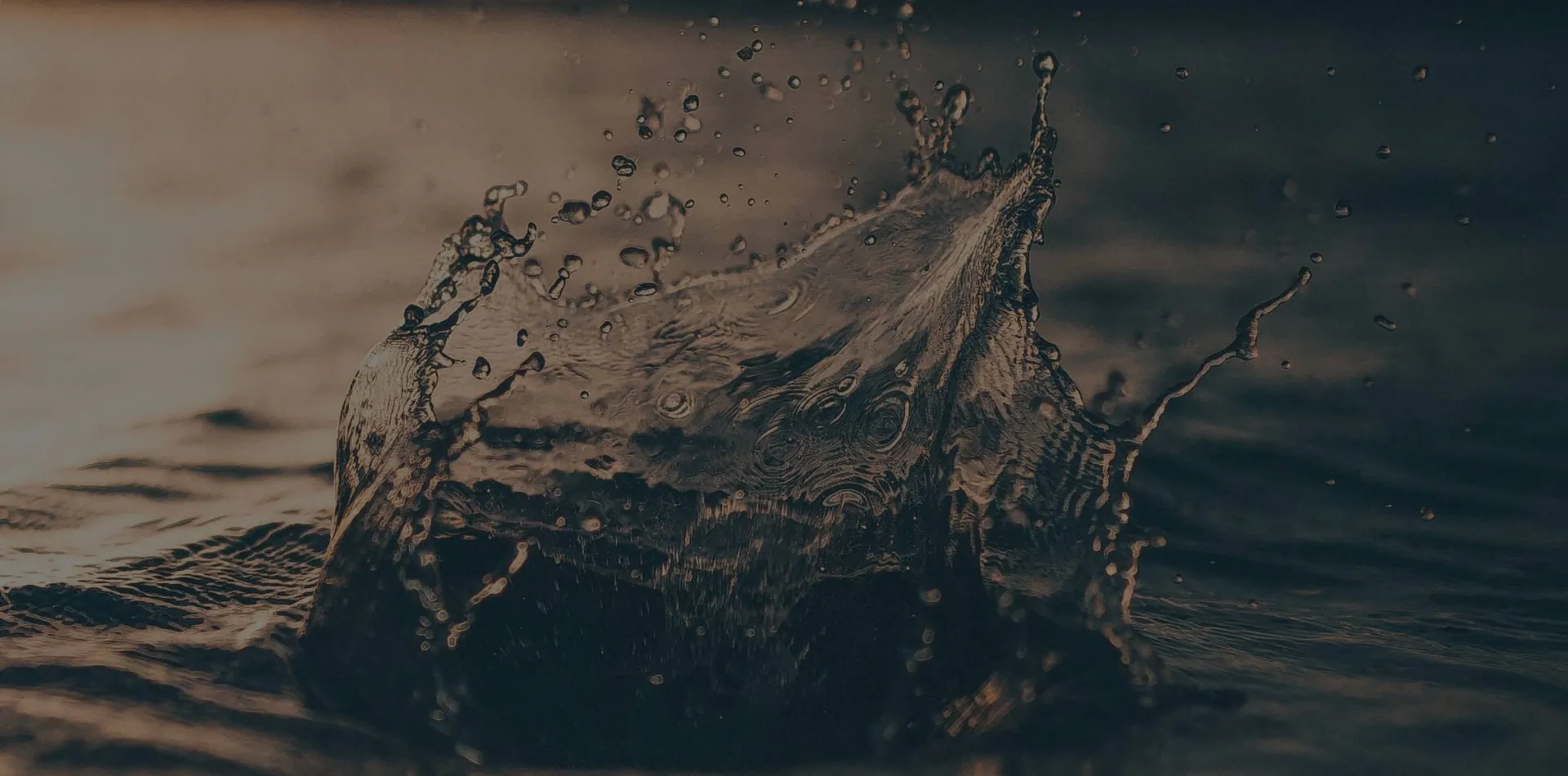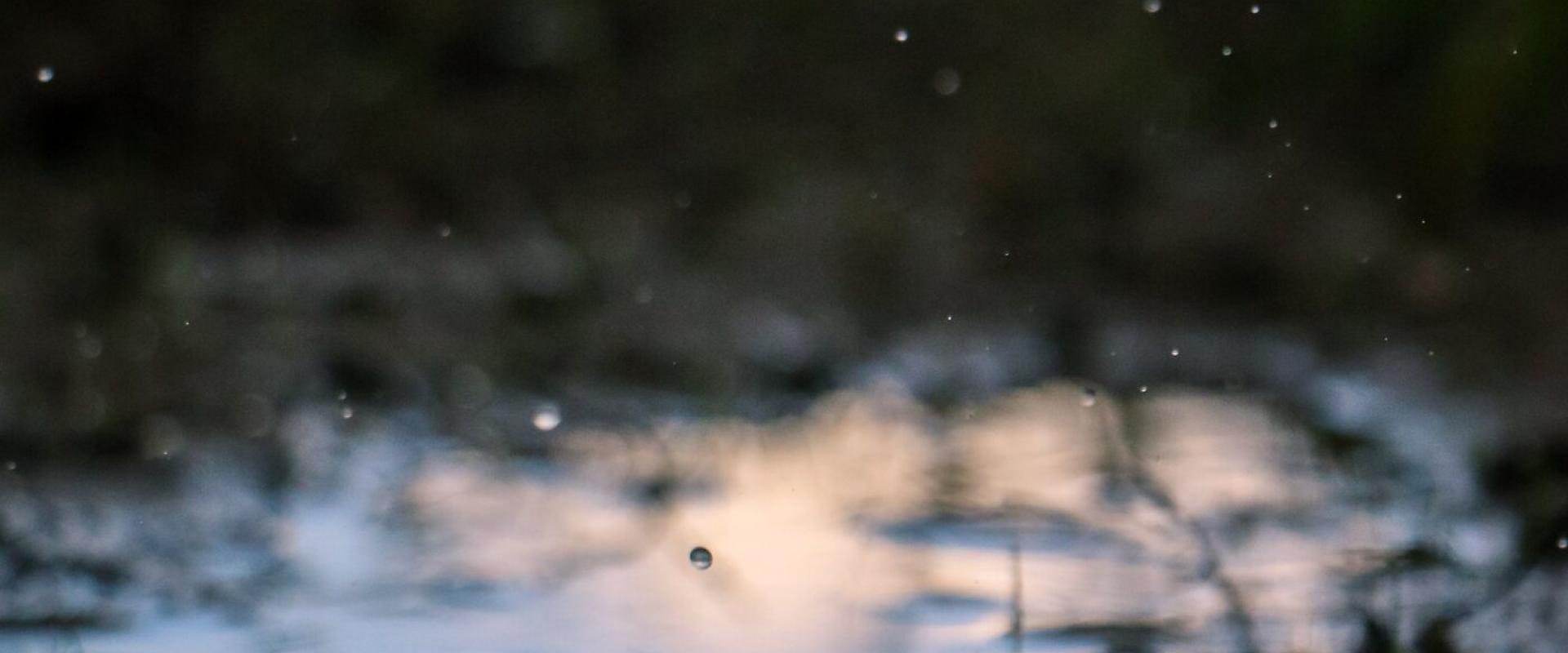Co-facilitators


Presentation
The current paradigm shift from static to changeable conditions in ecosystems – largely attributed to global change – poses unprecedented challenges for sustainable water resource management.
Actions to achieve long-term sustainable development goals and ensure water and food security are hampered by: (i) uncertainties arising from climate change, which exacerbate the ‘pernicious’ nature of environmental problems, and (ii) weak legal protection (e.g. EU Water Framework Directive (WFD), US Clean Water Act). This is because the legal protection of fresh waters is inherently founded on the need to respect water quality and quantity thresholds.
Yet it is just as important to consider water as an ecosystem and to maintain its quality to support the development of aquatic organisms and eco-health. We need to move away from a purely regulatory approach (with thresholds that must not be exceeded) towards a perspective based on new indicators and defined at the relevant spatial and temporal scales by research. Among other things, this entails factoring in socio-ecosystem functioning, the temporality of their responses to change, and their trajectories, taking into account the multi-constraint (biotic/abiotic, pollution/disturbance) paradigm.
The regulatory data acquired in an environmental health approach could then be translated into information and used to quantify the impacts of human activities on the functioning and evolution of socio-ecosystems. For example, we need to quantify the cumulated effects of fertilizer and pesticide use on socio-hydrosystems, and to prevent health risks for the environment (e.g. eutrophication, effects of endocrine disruptors, species extinction) and for humans (spread of viruses, chemical contamination, reproduction disorders, carcinogenic effects, etc.).
Challenge 3 comprises two major aspects:
1. What are the ecosystem response times to anthropogenic and climatic stresses?
The residence time of water and associated elements in the various compartments of socio-hydrosystems is extremely variable and often poorly understood, especially in a context of rapidly changing rainfall patterns and ever greater anthropogenic pressure. We therefore need to determine how water is distributed at the different organizational levels in socio-ecosystems, and how these volumes change over space and time. Given that most ecological models vary according to the spatial and temporal scale and to the granularity of observation, we need a deeper understanding of the structure of spatial and temporal variance before we can scale up predictions or take meaningful action as regards dynamic ecological mosaics. However, current water monitoring in France, Europe and the rest of the world continues to overlook certain aspects of hydrosystems, such as the headwaters of hydrographic network, interactions between the river, its alluvial plain and the various interacting aquifers, the impact of small reservoirs on water resources, and the quantification of intermittent river channels. These aspects must be addressed to understand how land occupation and use interact with water volumes and their variations in the different compartments.
2. What are the cumulated impacts of physical, chemical and biological pollution on hydrosystem health (as understood by the One Health approach), functioning and biodiversity?
We need to rethink the current approach based on a monitoring system isolated at a single station, using single-criteria and silo-type analysis (e.g. focused on the substance, separate consideration of chemical and ecological states, etc.), and move towards an eco-epidemiological approach, based on ‘nested scales’ (biological, spatial and temporal scales) and ‘cocktail effects’, and towards a predictive approach (decision support for management, restoration and development scenarios). The challenge is to consider the multiple sources of contamination, which are largely linked to human activities along the land-sea continuum, in all compartments. A new approach, based on the combined development of passive, active and non-targeted analyses could get around the problem of low concentrations, enabling a better assessment of actual water quality. In addition, the historical legacy of pollutants in the various compartments of the hydrosystem should be considered, for example using palaeoenvironmental approaches.
Ultimately, the objective is to propose realistic sustainable management tools that do not deter stakeholders.

Défi 3 - Eau Sentinelle
© OneWater

